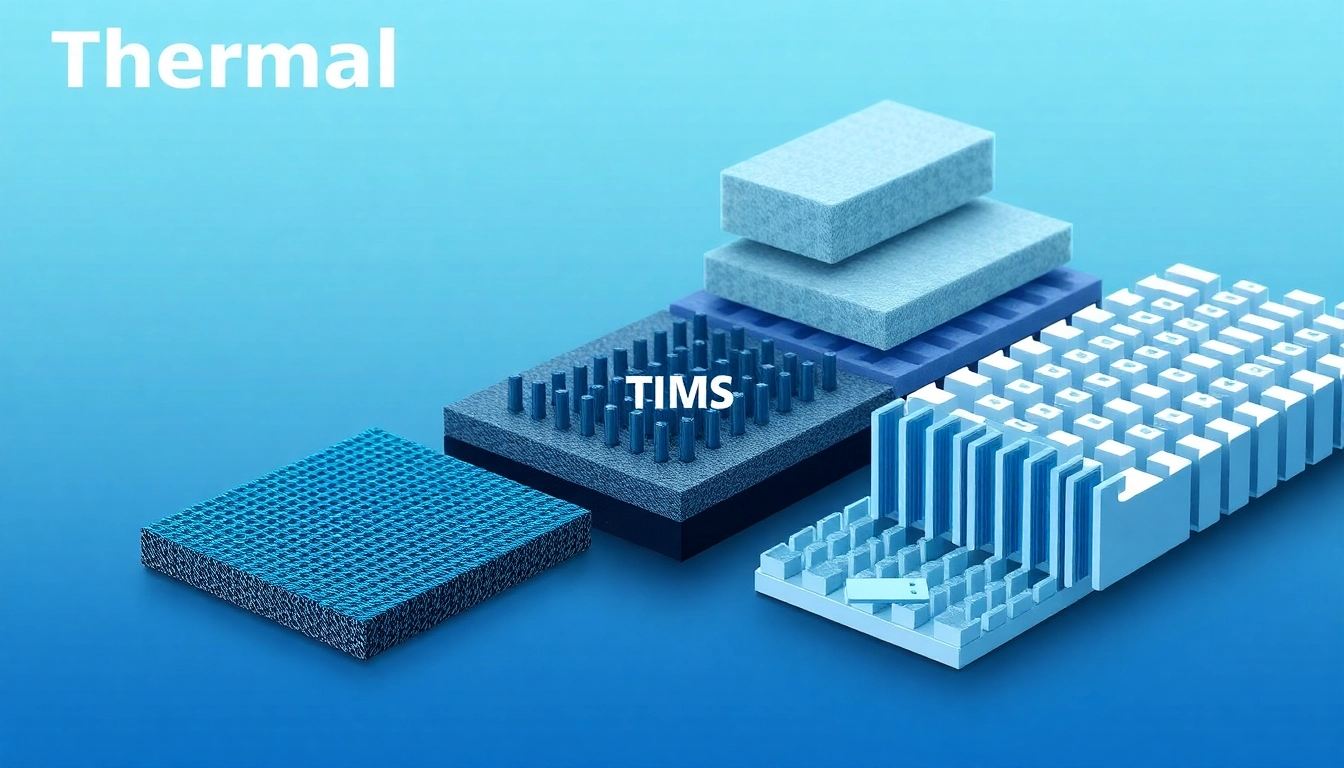Understanding Thermal Management Materials
In an era where electronic devices have become increasingly compact and powerful, managing heat within these systems has gained paramount importance. Thermal management materials play a crucial role in this domain, as they are designed to efficiently dissipate heat, ensuring optimal performance and longevity of electronic components. This article delves into the various aspects of thermal management materials, their applications, features, and emerging trends, providing readers with a deep understanding of this vital technology.
What are Thermal Management Materials?
Thermal management materials refer to a broad spectrum of materials specifically engineered to control and manage heat transfer in electronic systems. These materials are critical in various applications, ranging from consumer electronics to industrial machinery, where overheating can lead to performance degradation or component failure. Their primary functions include heat dissipation, insulation, and thermal conductivity enhancement, ensuring that temperature-sensitive components operate within their safe limits.
Types of Thermal Management Materials
Understanding the different types of thermal management materials is essential for selecting the appropriate solutions for specific applications. Here are some of the most common categories:
- Thermal Interface Materials (TIMs): These materials are placed between heat-generating components and heat sinks, serving to fill microscopic air gaps that can hinder thermal conductivity. Common types include thermal pastes, pads, and adhesives.
- Gap Fillers: These soft, conformable materials are designed to fill spaces between the heat source and heat sink, providing efficient thermal conductivity while accommodating slight misalignments in surfaces.
- Phase Change Materials (PCMs): PCMs absorb, store, and release thermal energy as they change from solid to liquid and vice versa. They are particularly useful in applications that experience fluctuating thermal loads.
- Thermal Greases and Adhesives: These materials enhance thermal transfer by filling voids between components. They are often used in high-performance computing and high-power electronic applications.
- Thermal Tapes: Pressure-sensitive tapes that include conductive fillers can be applied easily and eliminate the need for long curing times associated with adhesives.
- Heat Spreader Materials: Metals like copper and aluminum are used in heat spreaders to rapidly disperse heat from hot spots across larger surfaces.
Importance in Electronic Applications
The significance of thermal management materials cannot be overstated in electronics. They play an integral role in:
- Enhancing Performance: By maintaining optimal temperatures, these materials help sustain the efficiency and performance of electronic devices.
- Improving Reliability: Overheating can lead to malfunctions or failures, hence, effective thermal management extends the lifespan of components and systems.
- Facilitating Miniaturization: As devices become smaller and more powerful, effective heat dissipation strategies become critical to prevent overheating in compact designs.
Key Features of Thermal Management Solutions
Thermal Conductivity and Performance
One of the most critical attributes of thermal management materials is their thermal conductivity. This property determines how efficiently heat can be transferred away from heat-generating components such as processors, power transistors, and LED drivers. The effectiveness of thermal management solutions can often be quantified using metrics like the thermal resistance (R-value), which affects how well the material dissipates heat. Manufacturers now offer materials with thermal conductivities exceeding 20 W/m·K, catering to high-performance applications.
Durability and Application Suitability
In addition to good thermal performance, durability is a vital feature of thermal management materials. These materials must withstand environmental factors, including extreme temperatures, mechanical stresses, and chemical exposure. For instance, automotive applications demand materials that can handle high-temperature conditions and vibrations, while consumer electronics may prioritize materials that are lighter and more flexible. Testing for durability ensures long-term reliability under varying operational conditions.
Circuit Board and Heat Sink Optimization
Optimizing the interface between circuit boards and heat sinks is crucial for effective thermal management. Materials that exhibit excellent adhesion and conformability can significantly enhance thermal performance by eliminating air gaps that are detrimental to heat transfer. Advanced materials, such as silicone-based thermal pads and greases, are used to create better contact between surfaces, while specialized adhesive solutions ensure a secure bond, further facilitating efficient heat dissipation.
Applications of Thermal Management Materials
Consumer Electronics
In consumer electronics, thermal management materials are employed in smartphones, laptops, gaming consoles, and other devices where compact components generate significant heat. TIMs, gap fillers, and thermal pads are extensively used to ensure efficient heat transfer, thereby preventing thermal throttling and ensuring optimal performance.
Automotive and Industrial
The automotive sector relies heavily on advanced thermal management solutions, particularly in electric vehicles (EVs) and hybrid systems, where battery and engine components require efficient heat dissipation to maintain performance and safety. Advanced materials like PCMs are commonly used in battery packs to regulate temperature and enhance cycling performance.
In industrial applications, thermal management is vital in ensuring that machinery operates efficiently without overheating, which can lead to accidents or equipment failure. Industries that utilize thermal management materials include manufacturing, energy, and transportation.
Telecommunications Equipment
Telecommunications equipment, such as servers and network switches, generates high levels of heat due to continuous operation. Effective thermal management is crucial to maintain performance and prevent component failure. Here, thermal interface materials, heat spreaders, and phase change materials are employed to enhance cooling in data centers, ensuring optimal uptime and reliability.
Choosing the Right Thermal Management Materials
Assessing Thermal Needs and Compatibility
Selecting the most suitable thermal management materials begins with a comprehensive assessment of thermal needs. Understanding the heat generation characteristics of the components involved, along with the operational environment, helps identify which material properties are most critical—such as thermal conductivity, mechanical stability, and chemical resistance.
Moreover, compatibility with existing materials and components is essential to ensure that the selected solutions do not lead to adverse chemical interactions or exceed tolerable stress levels.
Evaluating Product Specifications
When choosing thermal management materials, it is vital to scrutinize product specifications. Key factors to consider include:
- Thermal Conductivity: Must meet or exceed the requirements of the application.
- Operating Temperature Range: Should be suitable for the specific environmental conditions of the application.
- Mechanical Properties: Such as tensile strength, compressibility, and flexibility, depending on the application’s demands.
- Application Methods: Ease of installation and compatibility with manufacturing processes should also be factored in.
Cost vs. Performance Considerations
In many cases, the most expensive thermal management material might not be the best solution. Evaluating cost versus performance involves understanding the long-term benefits, including extended component life, reduced energy consumption, and minimized maintenance costs. Often, investing in higher-quality materials results in better overall performance and reliability, translating into cost savings over time.
Future Trends in Thermal Management Materials
Innovations and Advancements
The landscape of thermal management materials is ever-evolving, driven by continuous advancements in technology. Innovations such as nanomaterials, which exhibit exceptional thermal properties, lay potential pathways to more efficient solutions. Development in composites that combine multiple properties, such as high thermal conductivity with lightweight and flexible characteristics, will likely become increasingly prevalent.
Impact of Sustainability on Material Choices
Sustainability concerns are influencing material choices across various industries. Manufacturers are increasingly focusing on eco-friendly materials that minimize environmental impact. For example, recyclable and biodegradable thermal adhesives are emerging, providing effective thermal management without compromising environmental standards.
Growing Markets and Demand
The demand for effective thermal management materials is anticipated to grow, particularly within high-tech industries such as electric vehicles, renewable energy, and advanced robotics. As technology continues to advance, integrating robust thermal management solutions will remain a priority for maintaining device reliability and performance.


